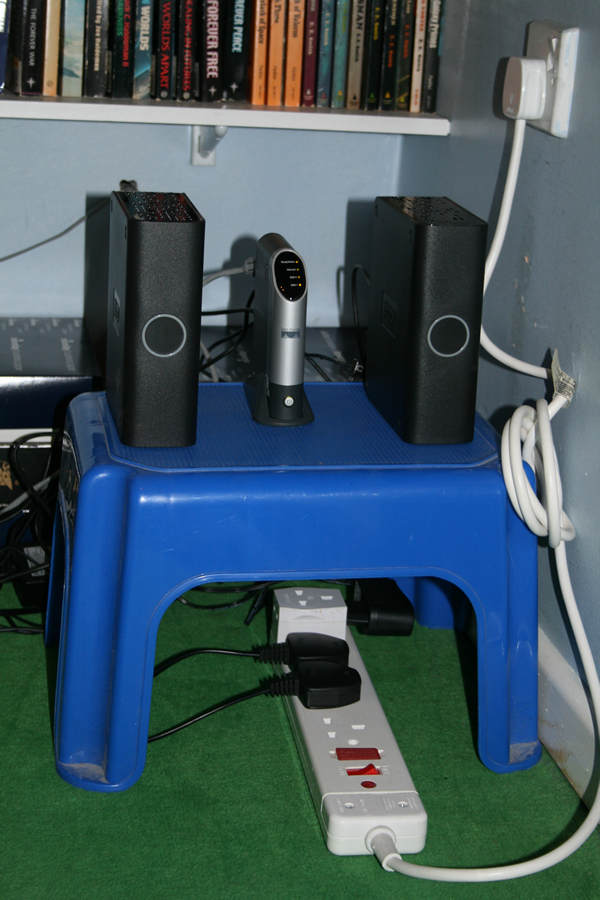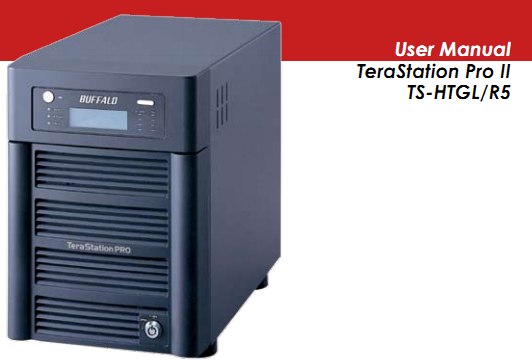Buffalo Terastation NAS
My data backup systems over the years have been pretty ad-hoc. Early in my retirement I made a deliberate start on cleaning up my act by equipping myself with a LinkSys "Slug" and a couple of 320GB external USB hard drives. The picture demonstrates the miniature nature of this ensemble, though it cannot show you how quiet it is. (Those are "normal" size paperbacks partly visible at the top.) The little device in the middle is the "Slug" embedded Linux system running on a descendant of the original Acorn RISC chip, faster than my 1996 RiscPC StrongARM. It's flanked by the two USB2 drives.

However, Christa's worsening health by that point quite rightly took complete priority over everything else.
Over four years later, with my post-Christa life finally somewhat more settled, I've looked afresh at data storage and backup. Hence the Buffalo Terastation, and its two pairs of 1TB SATA drives in RAID1 configurations...

I initially used two of these four drives in BlackBeast's original six-core incarnation as mirrored dynamic drives, but never again. Only Windows, I suspect, is quite daft enough to allow you to format a pair of disk drives in such a way that Windows itself can then disavow any knowledge of how to use them. Amazing. Restoring them to sensible non-mirrored usability without losing any of the data was a fairly sweaty-palmed exercise.
In June 2011 I fitted a Gigabit switch to speed up my internal network. I'd been content to use a 100Mbps system, but this started to seem inadequate for some of the backing up. As it happens, only my Blackbeast Windows 8 Pro PC and the Buffalo NAS can actually chat at this speed. Mind you, I don't expect to see an order of magnitude speed-up in their data exchanges. I've no doubt I'll simply uncover the next system performance bottleneck.